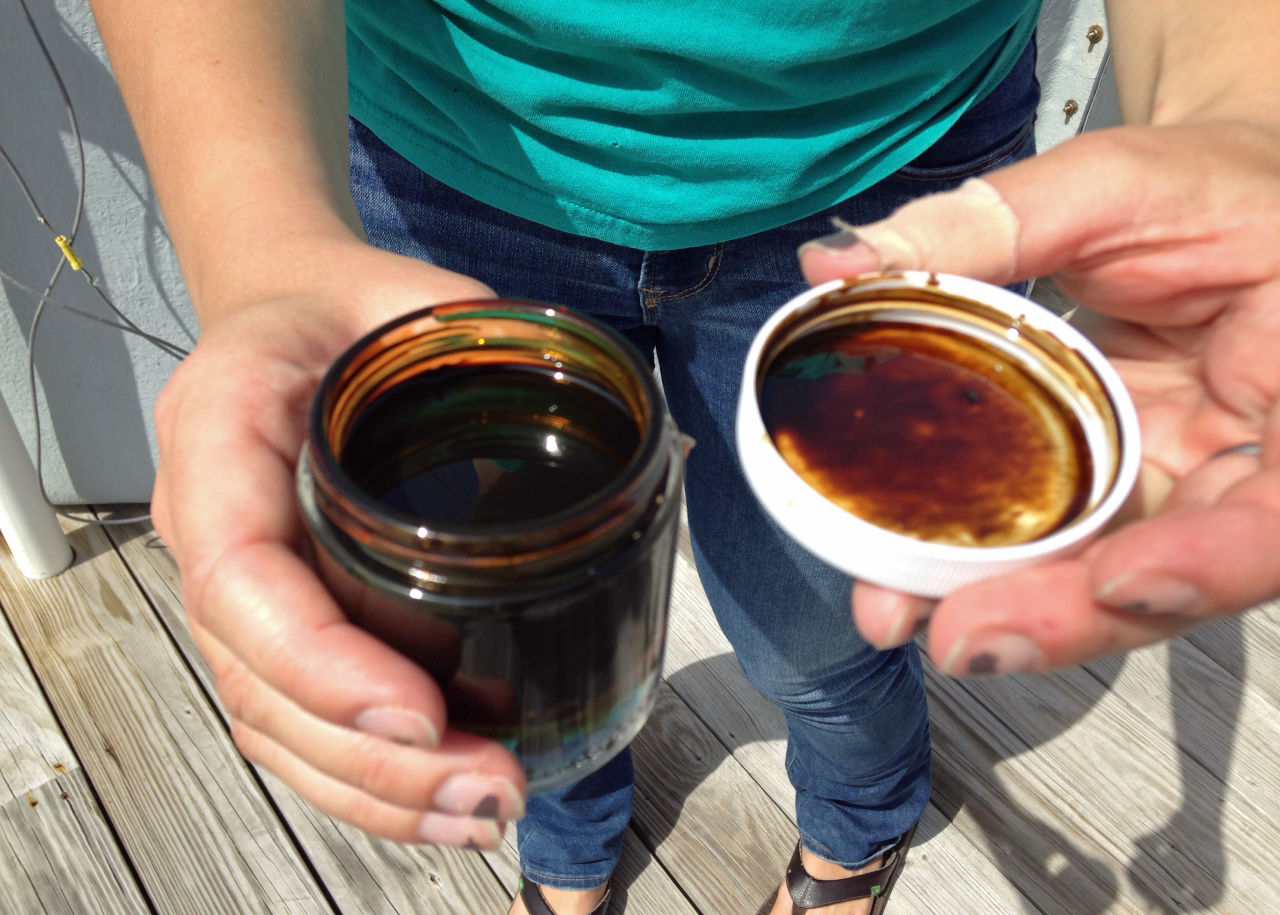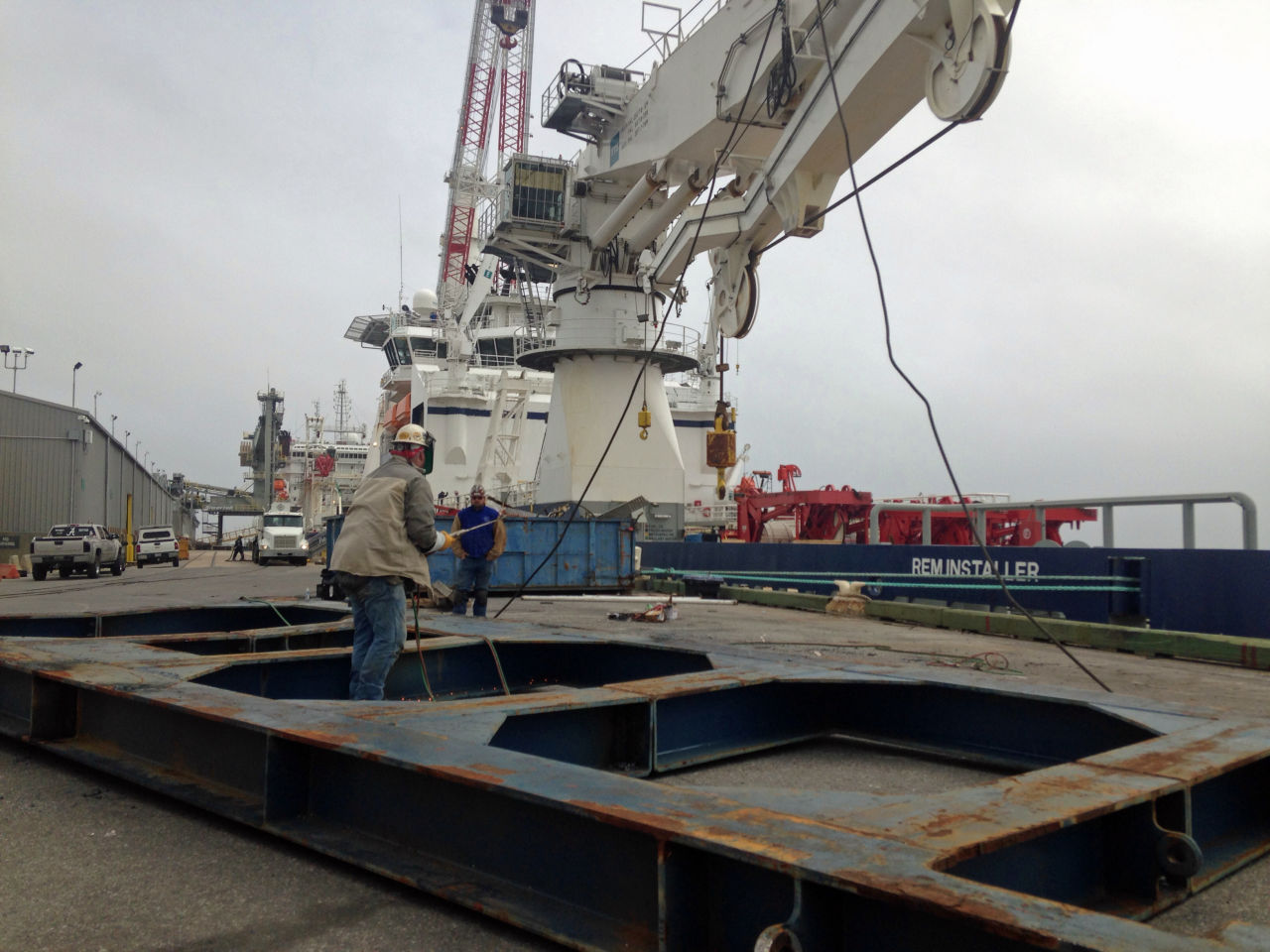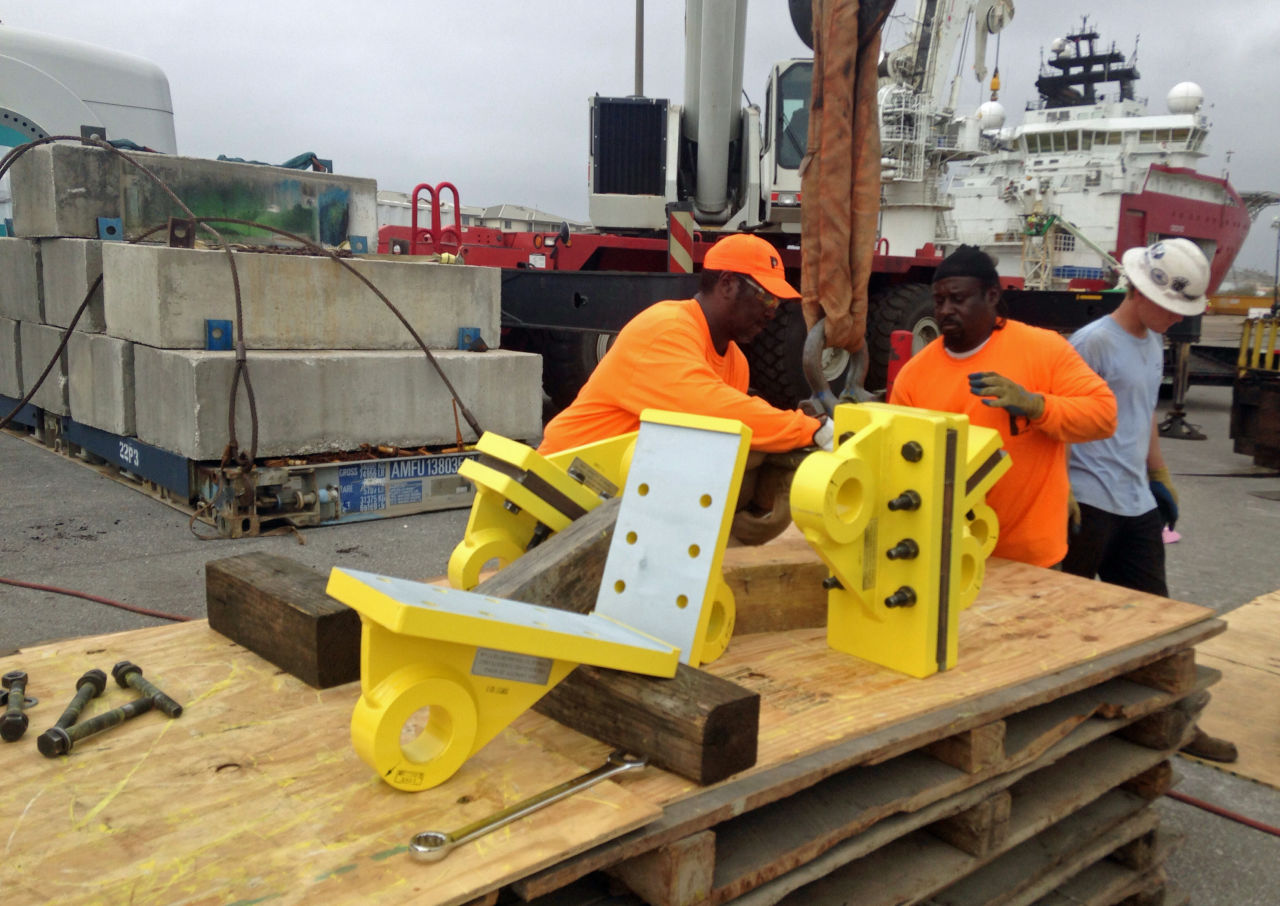Advertisement
Oil Slump Slows Drilling In Gulf, 6 Years After Deepwater Horizon
ResumeSix years ago next month, the Deepwater Horizon oil spill gushed nearly 5 million barrels of crude into the Gulf of Mexico.
Today, scientists are still trying to assess the long-term damage to the ecosystem and drillers are dealing with another problem – oil prices stuck at less than $40 a barrel.
Oil Research At Dauphin Island Sea Lab

Locals call Dauphin Island the "sunset capital of Alabama." It’s a gorgeous spot at the mouth of Mobile Bay and home to the Dauphin Island Sea Lab, where scientists still spend a lot of time thinking about that day in April six years ago.
Scientists like Tina Miller-Way, who runs an ROV competition for kids. Her students learn how underwater robots were used in the Deepwater Horizon spill.
Remember those videos from the ocean floor that showed the oil gushing out? An ROV took those. Miller-Way has weaved these themes into the project as her students build robots and test them.
“Our mission was based on finger-printing oil,” she explains. “They had to retrieve an oil sample. They had to use their ROV to retrieve it and tell where it came from.”
The Gulf of Mexico Research Initiative funded this project. Which means, BP funded it.

The oil company set aside $500 million after the spill and a group of independent scientists distributes that money to researchers who are still grappling with the long-term effects of oil in the ecosystem.
Dauphin Island Sea Lab’s Dr. Ken Heck has been dosing smooth cordgrass and black mangrove with oil from BP that resembles the crude found in this area. He’s tracking how the oil affects the growth rate of leaves and flowers.
Heck says that it’s still too early to tell if the spill hurt larger species with long lifespans like dolphins and turtles, but he adds that many smaller plants and animals that don’t live as long appear to have recovered.
“We thought the spill would devastate the Gulf,” he says. “It didn’t really happen. There’s not a clear understanding of why.”
Low Oil Prices And The Port Of Pensacola
The research money set aside by BP is running out. It was only supposed to last a decade. But the oil industry carries on, even as drillers are withering under prices that are more than 50 percent lower today than in April 2010.

For that story, we go east, across the Mobile Bay, into the Florida panhandle.
At the Port of Pensacola, the Bibby Sapphire is moored to the dock. A crane rises above its deck like an elevator to heaven. This ship supports construction on oil rigs out in the open water. There’s two more just like it nearby. The floating giants house workers, and some of the ships can lay pipe on the ocean floor.
When they need maintenance, they come here to get serviced.
“The Bibby Sapphire's going to be here for two weeks, the Skandi Seven will be here for five days, the Nor Goliath down at the other side of the port has been here almost five months,” says Pensacola Port director Amy Miller.
If this had been the heady days of oil drilling, she says the ships would probably still be out at sea. With prices so low, giants like ConocoPhillips are giving up looking for new oil in the Gulf. The down market is bad news for oil companies. It's pretty good news for the Port of Pensacola, which collects money every day a ship is moored to the dock.

“We're making money and they're not,” Miller says.
But frankly, there are problems. Not far from the dock there’s a cavernous, unfinished warehouse. It was supposed to be a pipe factory. The promise of 250 jobs, silenced.
“We’re real apprehensive about the state of the industry,” says Buddy McCormick, vice president of Offshore Inland, the oil-servicing company that was leading the project. “Depending on who you read and what you listen to, half of our customers, which are mostly the drillers, could go out of business next year.”
Port director Amy Miller says if oil gets back up to $60 or $70 dollars a barrel, this project might make sense. In the meantime, McCormick hangs on. His company has cut jobs and slashed prices.
“We just keep seeing the forecast shrink and shrink and shrink,” he says.

Reporter
- Peter O’Dowd, assistant managing editor for Here & Now, currently reporting in Florida. He tweets @odowdpeter.
This segment aired on March 14, 2016.
